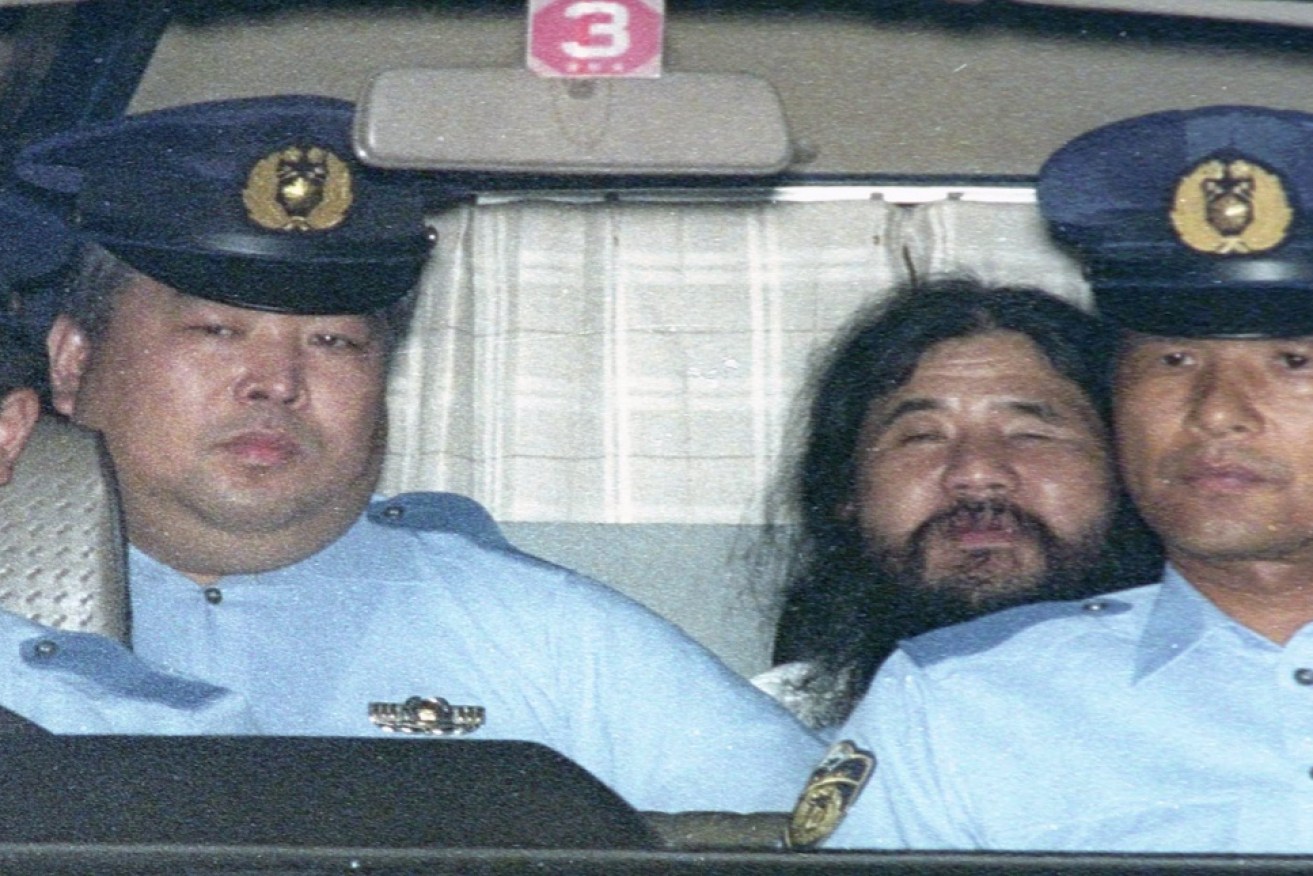Japan executes last jailed members of deadly doomsday cult


Shoko Asahara returns from court to jail during his 1995 trial. Photo: AAP
Japan has executed more members of the doomsday cult behind the deadly 1995 sarin attack on Tokyo’s subway.
Amnesty International said on Thursday that six more members of the Aum Shinrikyo cult had been executed, bringing to 13 the number executed in July.
Earlier this month, cult leader Shoko Asahara and six of his followers were hanged. Asahara, who was nearly blind, and his followers had been on death row for nearly a decade.
There was no immediate confirmation from Japanese authorities of the deaths. Japan’s Justice Minister, Yoko Kamikawa, did confirm the first round of executions in the days after, saying sect members were responsible for “extremely atrocious and grave acts that were unprecedented and should never happen again”.
The peak-hour sarin attack on Tokyo’s underground rail killed 13 people and injured more than 6000. Doomsday cult members had trained for the deadly attack at a remote farm in Western Australia’s Goldfields.

Dilapidated buildings at Banjawarn Station. Photo: ABC
The cult had moved to Banjawarn Station, near Leonora, in the early 1990, but authorities discovered the WA connection only after the deaths.
Federal and state police raided the abandoned station, the ABC reports, finding evidence it had been used for scientific experiments, including making and testing sarin.
Traces of sarin – a nerve agent originally developed by the Nazis – were found in the carcasses of 24 sheep in a remote part of the property, and in the surrounding soil.
Aum Shinrikyo’s 1995 attack plunged Tokyo into chaos, and prompted a crackdown on its headquarters in the foothills of Mount Fuji. There, authorities discovered a plant capable of producing enough sarin to kill millions.
New agency Agence France-Press reported that members of the group released liquid sarin from plastic bags at five points in Tokyo’s underground rail network. Soon commuters began struggling to breathe, staggering from trains with their eyes watering. Others keeled over, foaming at the mouth, with blood streaming from their noses.

Emergency workers descend on the Tokyo subway after the sarin attack. Photo: Getty
“Liquid was spread on the floor in the middle of the carriage, people were convulsing in their seats, said Sakae Ito, who was on the underground that day. “One man was leaning against a pole, his shirt open, bodily fluids leaking out.”
Panic set in, with rail workers screaming at people to evacuate, AFP said. Japanese Self-Defence Force members, dressed in hazmat suits and gas masks, descended into the depths to help the wounded and deal with the poison.
Aum members have also been convicted of another sarin attack in the town of Matsumoto in 1994, as well as the 1989 murder of an anti-cult lawyer and his family.
Despite the crackdown on the cult, it was never formally banned.
It officially disowned Asahara in 2000 and renamed itself Aleph. But experts say the former guru retained a strong influence before his execution.
Japan is one of the few developed nations to retain the death penalty. According to Amnesty International, which condemned the latest hangings, the last time Japan executed more than 10 people in a year was in 2008.
-with agencies








